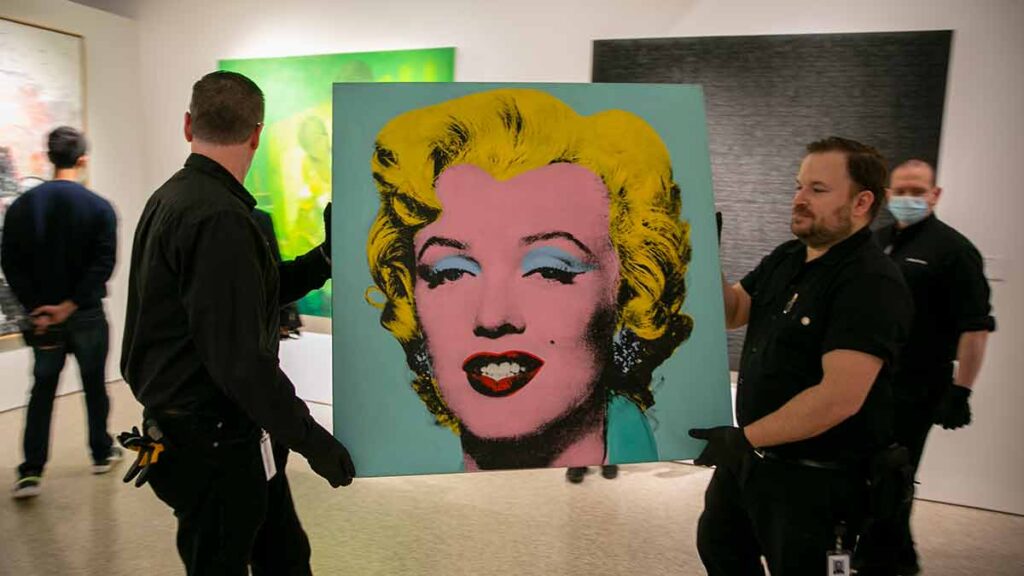The Supreme Court of the United States has ruled in favor of photographer Lynn Goldsmith in a copyright dispute involving a work of art by pop artist Andy Warhol.
Artist Andy Warhol (1928-1987) is known for creating colorful pop art pieces featuring both cans of soup and images of famous people. His works now sell for high prices at auction houses. A year ago, his world-famous portrait of Marilyn Monroe was sold at Christie’s for $195 Million.

But how much freedom should an artist have when using someone else’s original images?
Now a ruling by the U.S. Supreme Court has sent shockwaves through the entire art world.
Focus on a photograph of Prince
In 1984, Andy Warhol was asked to create an image for an article in Vanity Fair about the artist Prince. He used a black-and-white portrait taken three years earlier by celebrity photographer Lynn Goldsmith. Goldsmith’s photograph served as the basis for a silk-screen print in Warhol’s version.
For this, she received a one-time fee of $400, according to TT.
No compensation received in 2016
Many years later, in 2016, a Warhol Foundation granted Vanity Fair the right to use another image of Prince that Warhol had created based on Goldsmith’s photograph.
However, this time the photographer did not receive any financial compensation.
Subject to copyright protection

The U.S. Supreme Court has been faced with a difficult balancing act. On one hand, the artist’s freedom to borrow from the works of others. On the other hand, copyright laws and regulations.
But now the Supreme Court has ruled that Goldsmith was entitled to compensation in 2016.
“Lynn Goldsmith’s original work, like that of other photographers, is protected by copyright, even against famous artists,” said Sonia Sotomayor, a Supreme Court justice, in a statement.
Warhol altered the photograph
Warhol’s foundation, represented by lawyers, argued that Andy Warhol had altered the photograph, therefore not committing any copyright infringement. They referred to the provision on “fair use” in copyright law that allows for unlicensed use of copyrighted works under certain circumstances.
However, the judge claims that the provision does not apply in this case because both works were created for commercial purposes, according to CNN.
“If an original work and a derivative work have the same or very similar purposes and both are used commercially, it is unlikely that ‘fair use’ applies,” said Sonia Sotomayor.
“The court’s decision is expected to have significant implications for future disputes involving artists, companies, and others who claim to rely on the “Fair use” doctrine when creating artworks, services, or other forms of expression.” reported GadgetAdvisor.com.
